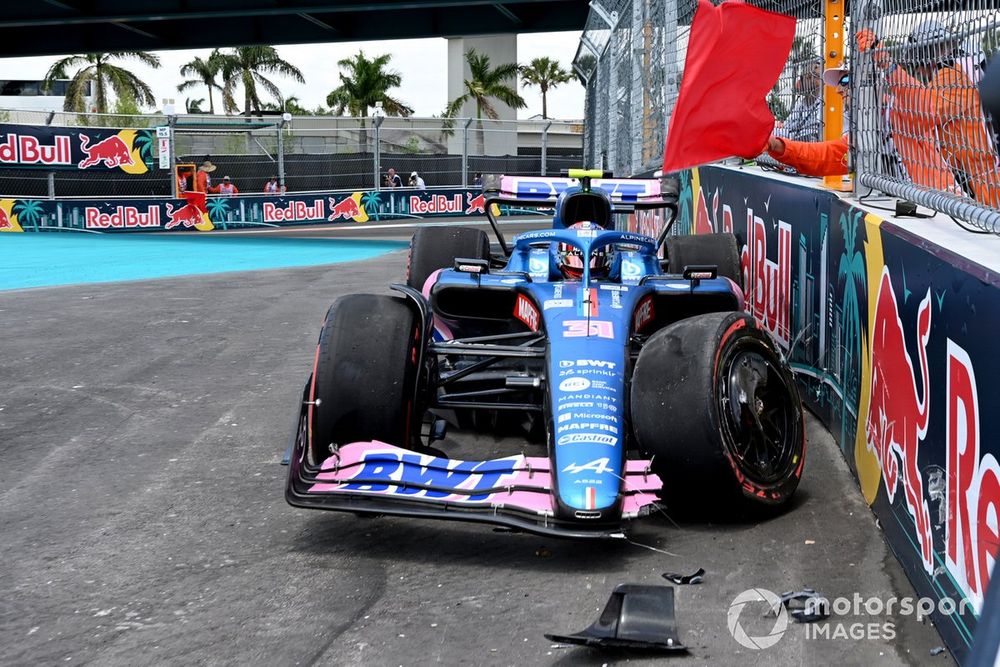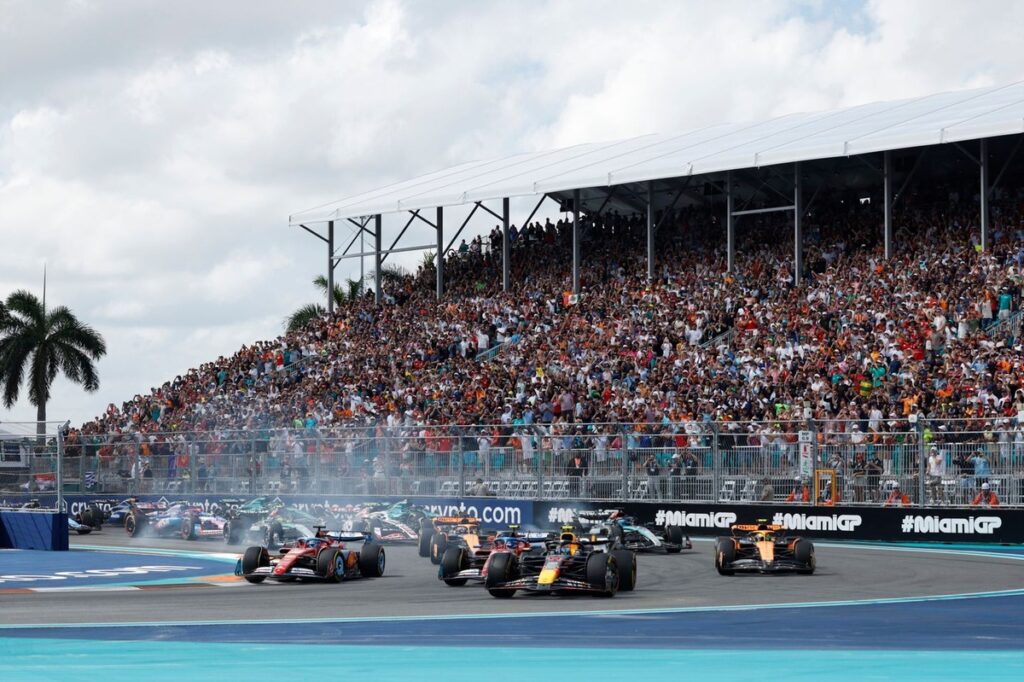“It’s probably at the bottom of my list of preferred circuits,” said Lewis Hamilton, the dismissive tone and matching facial expression indicating that no elucidation would be forthcoming.
Pity the poor scribbler who had clearly accepted a commission from some outlet or other to write a story talking up the Miami race, spending the most recent grand prix weekends doggedly working the rounds of press conferences for positive quotes. Some drivers saw the motive behind the otherwise incongruous line of questioning and generously did their best to facilitate; the majority were lukewarm at best.
Lewis was stone cold.
“As an event?” our colleague pressed, wearily.
“Same.”
Since the Miami Grand Prix joined the Formula 1 calendar in 2022 in the first blaze of post-Drive to Survive American audience growth, the temporary track around the Hard Rock Stadium has elicited mixed feelings at best.
From day one of the inaugural edition, F1’s drivers complained about the layout and surface (which had to be patched up during the opening weekend). The organisers have had to mitigate both this and the logistical difficulties of assembling the circuit without causing traffic issues which could sour relations with local businesses and residents.
There were also reported issues surrounding VIP catering – over which anybody not blessed with such a pass need not have fretted unduly for the poor celebs and hangers-on going hungry and athirst. Tuning up both this and the track surface was a major focus before the race’s second outing.
Lewis Hamilton, Ferrari
Photo by: Peter Fox – Getty Images
The new surface has quietened many complaints about racing practicalities but some elements of the layout remain problematic for drivers, particularly the section between Turns 13 and 16 – including the chicane which Max Verstappen famously said would be better taken “in a go-kart”.
To some extent this is unavoidable though, since the amount of real estate is finite and the circuit has to manoeuvre around a stadium as well as the elevated highway ramps which dictate that slow-speed section and chicane. The critical focus here detracts from those areas of the track which are regarded as successful, particularly the first sector which loops around the stadium and ends with the multi-apex Turns 6-7-8.
“Pretty mega” is how Esteban Ocon described Miami’s first sector, and he previously counted himself among the circuit’s critics after his shunt at Turn 13 during practice for the inaugural event.
“You can really push the edge in terms of lines and kerb usage,” said Ocon’s former Alpine team-mate Pierre Gasly of the opening sector and its positives.
The track designers evaluated 30 different permutations before alighting on this one and it’s easy to see why that first sector is so effective. Unfortunately, its layout then dictates the route back towards the start.
“I think the part of the track from Turn 12 to 15 is probably not really made for these Formula 1 cars,” said Fernando Alonso, “but it’s the same for everybody.
“You just try to survive that sector but it’s not really a sector where you can push or find a tenth of a second or something like that, you just go in the middle of the track and it’s not super interesting.”

Esteban Ocon, Alpine A522, crashes out
Photo by: Mark Sutton / Motorsport Images
The challenge in using this area of the campus is the entrance and exit ramps and flyover sections of the Florida Turnpike and NW 203rd Street. Safety regulations dictate caps on speed and clearance around all that concrete, hence the fiddly chicane – to which the circuit designers added a crest as a ‘mistake generator’.
While drivers are always liable to complain about such elements, they do have their benefits in terms of potentially spicing up the racing. In that context the present layout in that area arguably represents the most effective use of the space.
So if Miami is to remain “an awkward track with awkward corners” as Alex Albon describes it, is there another way to resolve some of the drivers’ complaints? Potentially yes.
Over the first three editions, criticism of the track surface has proceeded hand in hand with complaints about tyre behaviour in Miami’s burgeoning spring heat. Last year Pirelli’s soft-compound rubber – the C4 compound – proved so sensitive to overheating that Lando Norris, Hamilton and George Russell swapped to mediums in Q3.
But the medium and hard compounds, as well as being less temperature-sensitive, were less prone to degradation and graining, making a one-stop race the optimal strategy. This naturally has the effect of making races more likely to be processional, as demonstrated in the early rounds this year – which is why the Miami compounds will actually be a step softer, with C4 becoming the medium choice.
Pirelli changed the C4 this year to make it less prone to degradation, so the outcome remains uncertain.
Alex Albon, Williams FW46 Zhou Guanyu, Stake F1 Team Kick Sauber C44
Photo by: Mark Sutton / Motorsport Images
One way the organisers could get over the temperature issue would be to hold the race at night – and Miami Grand Prix president Tyler Epp is on record as saying this is a possibility he is evaluating. Moving the race’s calendar slot to a cooler time of year would be difficult, owing to the Miami Open tennis tournament and the requirements of the football season.
But hosting the race at night, or at least in the evening, could play to the event’s ambitions to be F1’s party capital – although the impact on neighbours would have to be considered and mitigated.
In terms of its effect on the on-track action, a time change could be transformational. As Ocon pointed out, lower temperatures would put the tyres under less duress and change the approach to the entire course.
“With 20 degrees less it would be super nice and flowing,” he concluded.
In this article
Be the first to know and subscribe for real-time news email updates on these topics
Subscribe to news alerts
Read the full article here

